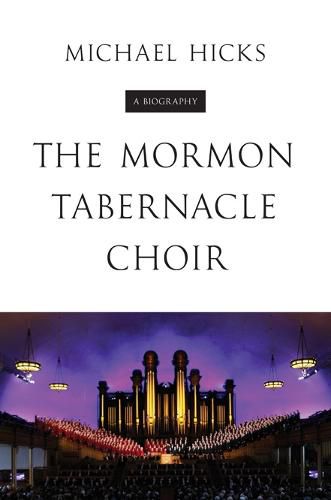Readings Newsletter
Become a Readings Member to make your shopping experience even easier.
Sign in or sign up for free!
You’re not far away from qualifying for FREE standard shipping within Australia
You’ve qualified for FREE standard shipping within Australia
The cart is loading…






A first-of-its-kind history, The Mormon Tabernacle Choir tells the epic story of how an all-volunteer group founded by persecuted religious outcasts grew into a multimedia powerhouse synonymous with the mainstream and with Mormonism itself. Drawing on decades of work observing and researching the Mormon Tabernacle Choir, Michael Hicks examines the personalities, decisions, and controversies that shaped America’s choir. Here is the miraculous story behind the Tabernacle’s world-famous acoustics, the anti-Mormonism that greeted early tours, the clashes with Church leaders over repertoire and presentation, the radio-driven boom in popularity, the competing visions of rival conductors, and the Choir’s aspiration to be accepted within classical music even as Mormons sought acceptance within American culture at large. Everything from Billboard hits to TV appearances to White House performances paved the way for Mormonism’s crossover triumph. Yet, as Hicks shows, such success raised fundamental concerns regarding the Choir’s mission, functions, and image.
$9.00 standard shipping within Australia
FREE standard shipping within Australia for orders over $100.00
Express & International shipping calculated at checkout
A first-of-its-kind history, The Mormon Tabernacle Choir tells the epic story of how an all-volunteer group founded by persecuted religious outcasts grew into a multimedia powerhouse synonymous with the mainstream and with Mormonism itself. Drawing on decades of work observing and researching the Mormon Tabernacle Choir, Michael Hicks examines the personalities, decisions, and controversies that shaped America’s choir. Here is the miraculous story behind the Tabernacle’s world-famous acoustics, the anti-Mormonism that greeted early tours, the clashes with Church leaders over repertoire and presentation, the radio-driven boom in popularity, the competing visions of rival conductors, and the Choir’s aspiration to be accepted within classical music even as Mormons sought acceptance within American culture at large. Everything from Billboard hits to TV appearances to White House performances paved the way for Mormonism’s crossover triumph. Yet, as Hicks shows, such success raised fundamental concerns regarding the Choir’s mission, functions, and image.